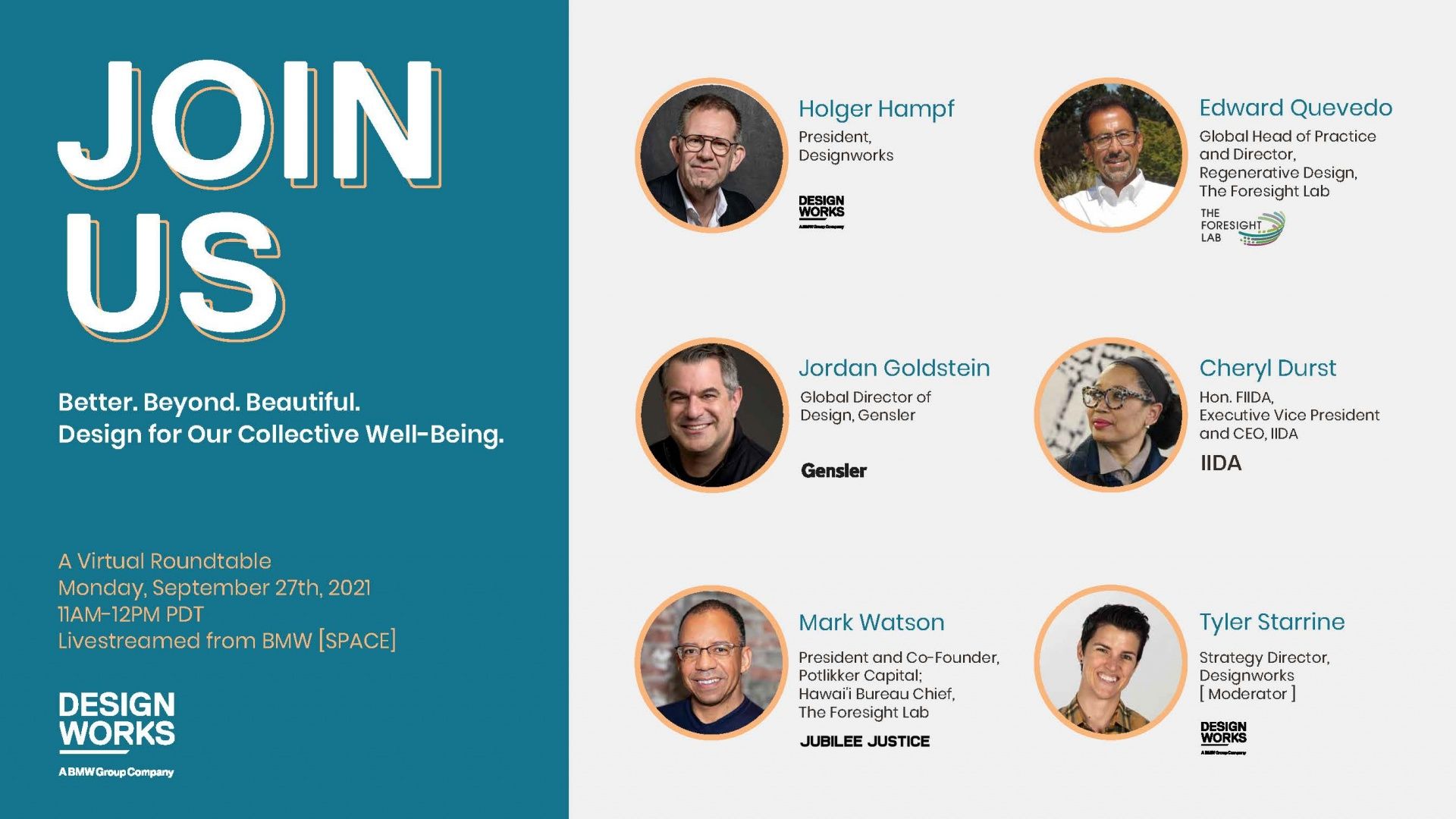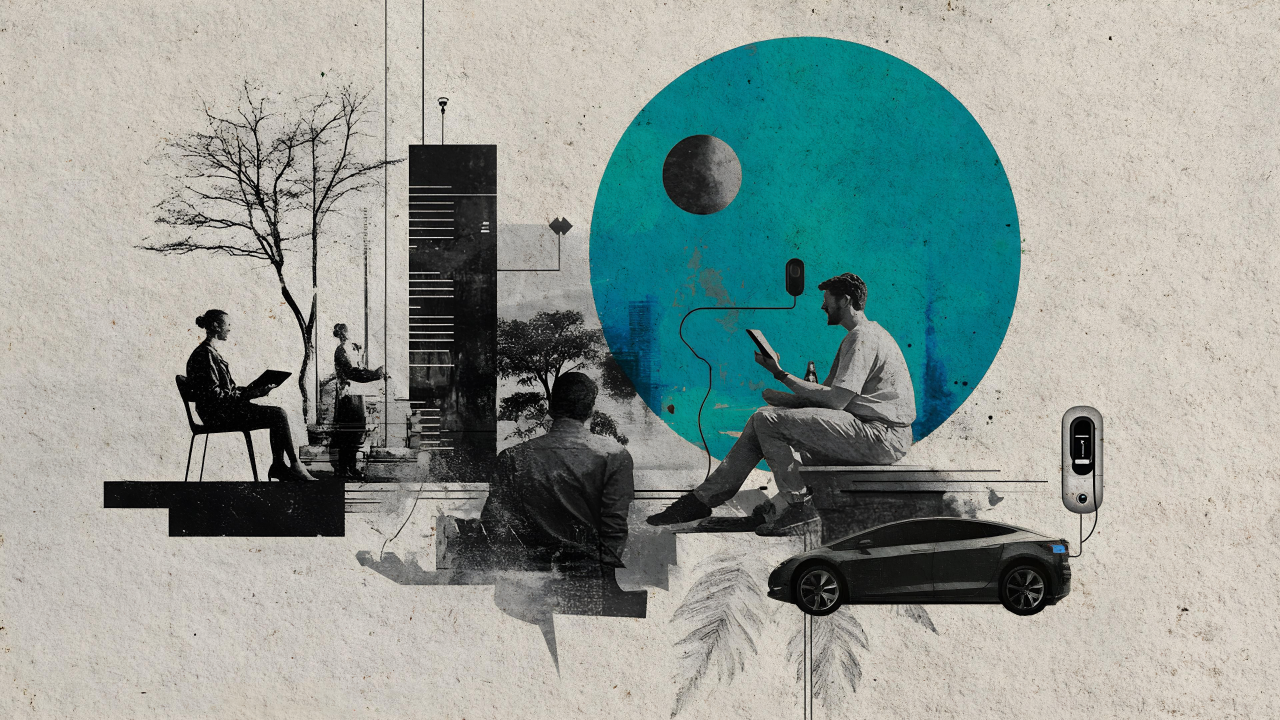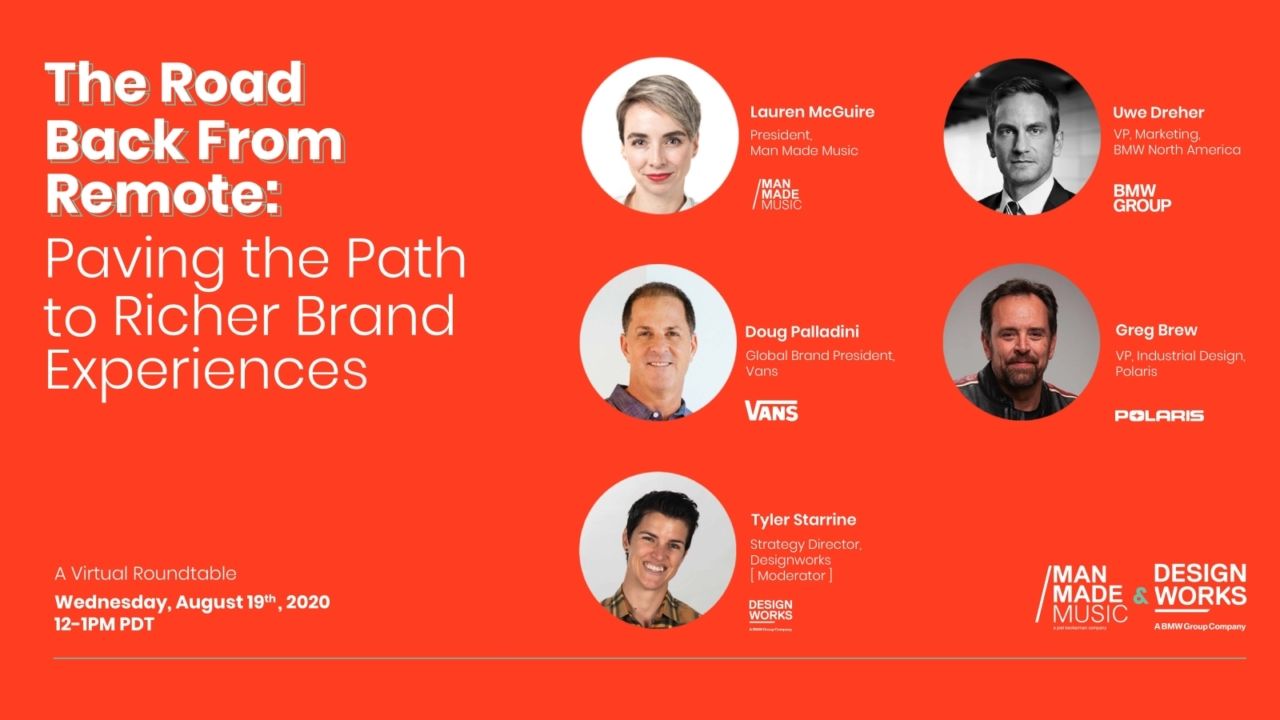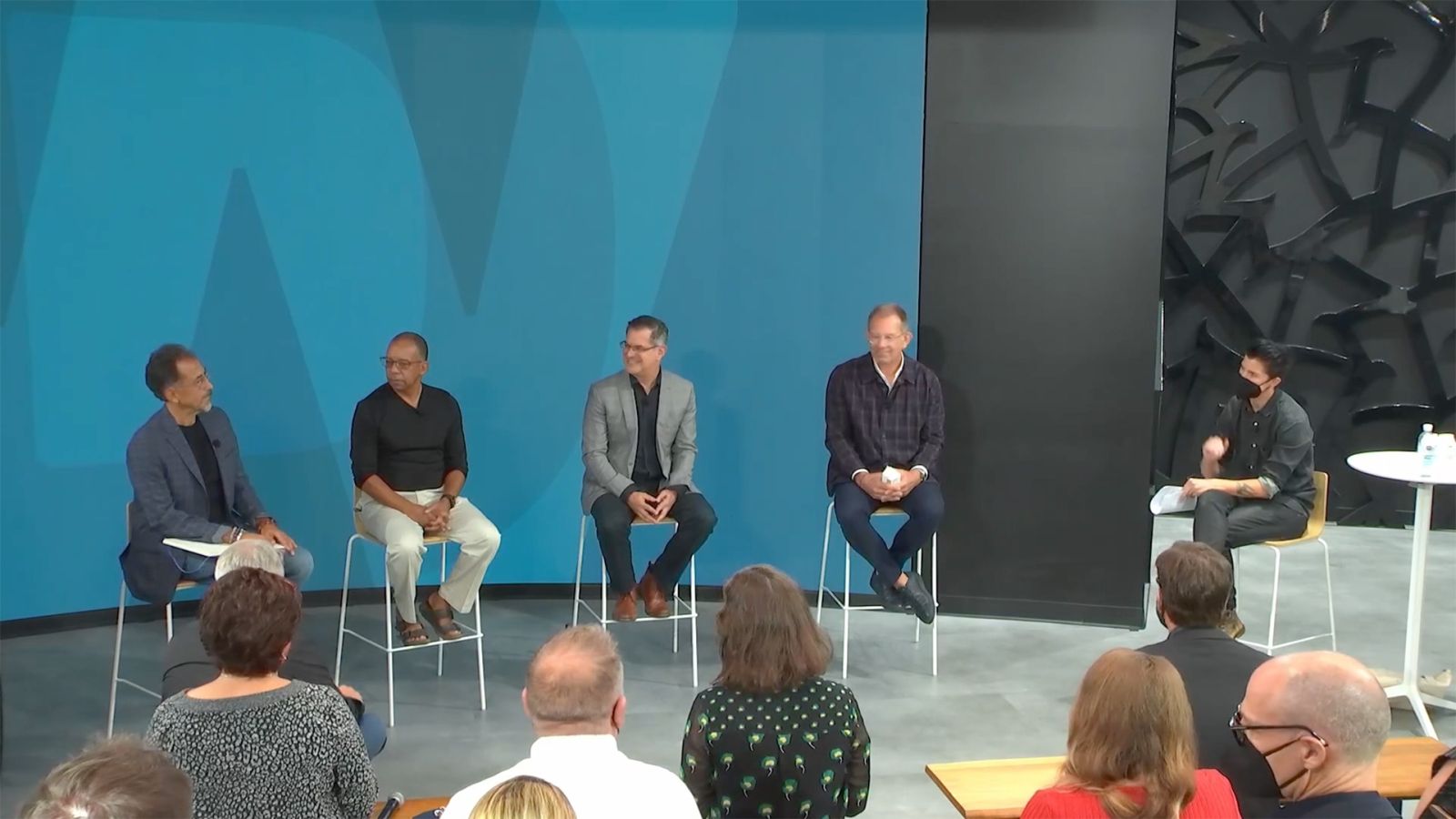
What is regenerative design, and why is it critically important to our role as designers? Designworks recently invited globally renowned experts in architecture, environmental design, social finance, cultural transformation and mobility to join us in addressing this topic — and to take on the ambitious task of redefining who we design for and how we go about doing it so that we might reach our shared ambition: a healthy, verdant and equitable future. What follows is the outcome of this dialogue, and a shared ambition for the future.
What is Regenerative Design?
Regenerative Design is a process that restores, renews and revitalizes the energy and materials that are involved in the design process. Going beyond just the individual object, space or materials being designed, regenerative design challenges us to focus on the broader impact that it will have on our shared ecosystem. Considering how it will impact the cultural, economic and societal well-being beyond the individual level, and recognizing the responsibility we have, as designers, to the health and wellness of the whole system.
To understand the impact that regenerative design can have, one can look to the popular Yerba Mate company, Guayaki for inspiration. The company uses a model it calls “Market Driven Regeneration” that empowers customers to drive tangible change. Through a commitment to empowering the indigenous communities from which their product is sourced, the company has contributed to rainforest revitalization and providing meaningful jobs to thousands of locals for nearly 26 years — proving that regenerative design can be a highly sustainable and effective business model.
Through the examination of successful regenerative design practices such as this one, four key areas of exploration were identified:
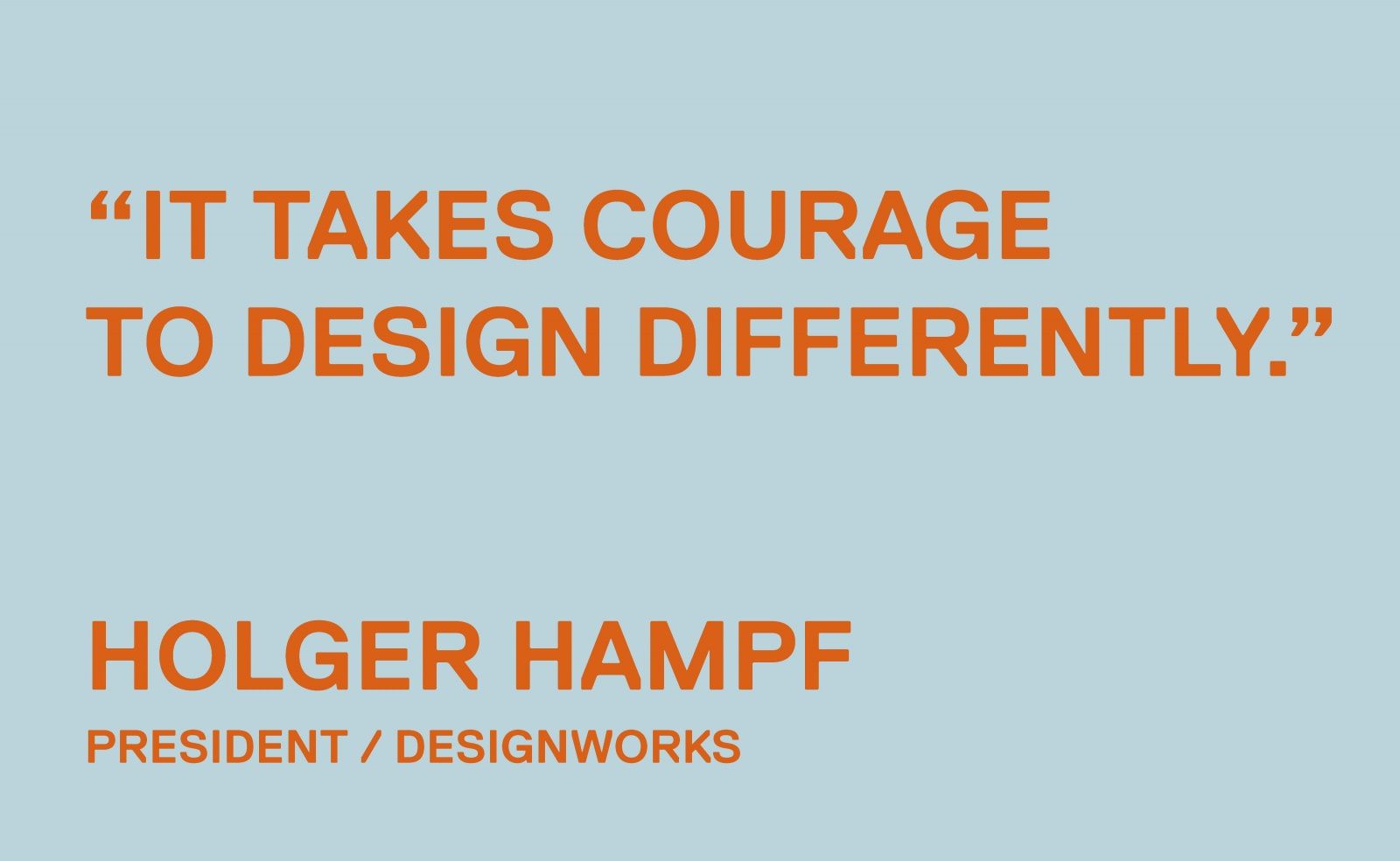
1. DESIGN DIFFERENTLY
As highlighted by Designworks President, Holger Hampf, we find ourselves in an exciting moment of realizing how design can have a much larger impact than just a single product or person. Design brings along a technical toolset, but its most valuable asset is its empathy. While we are often presented with speculative dystopias when thinking about the future, design provokes us to turn this anxiety into excitement by presenting visuals of possible futures that are better for everyone.
For example, regenerative design inspires us to think about the importance of fluidity when designing products and spaces that will one day need to take on a new life—or possibly an infinite number of new lives. Rather than fixating on a solid product outcome, modularity should be our goal.
2. REDEFINING KPIs
Mark Watson, Founder of Potlikker Capital, framed regenerative design as a concept that isn’t new, but one that we are now having to rediscover. Our ancestors used this model because they needed to, and we are now relearning that we do too.

A large part of this rediscovery process is shifting how we measure returns on our projects. While there are many levels of transactions, from community impact to systemic impact, it is important to recognize that when pricing models were created, key factors such as social unrest, demographic shifts and climate change were left out of the pricing model. This means that redefining returns is a crucial to creating a future that values what is important.
3. COMMUNITY + COLLABORATION
Jordan Goldstein, Global Director of Design at Gensler underscores his ideas about regenerative design with the notion that “we cannot be global if we are not local first.” Through Gensler’s large-scale design projects, his teams have learned that it is essential to connect with the local neighborhoods they are working in. Ultimately coming to the conclusion that the impact their work has on place and space has an impact on community behavior. Designs are stronger when local voices are at the table.
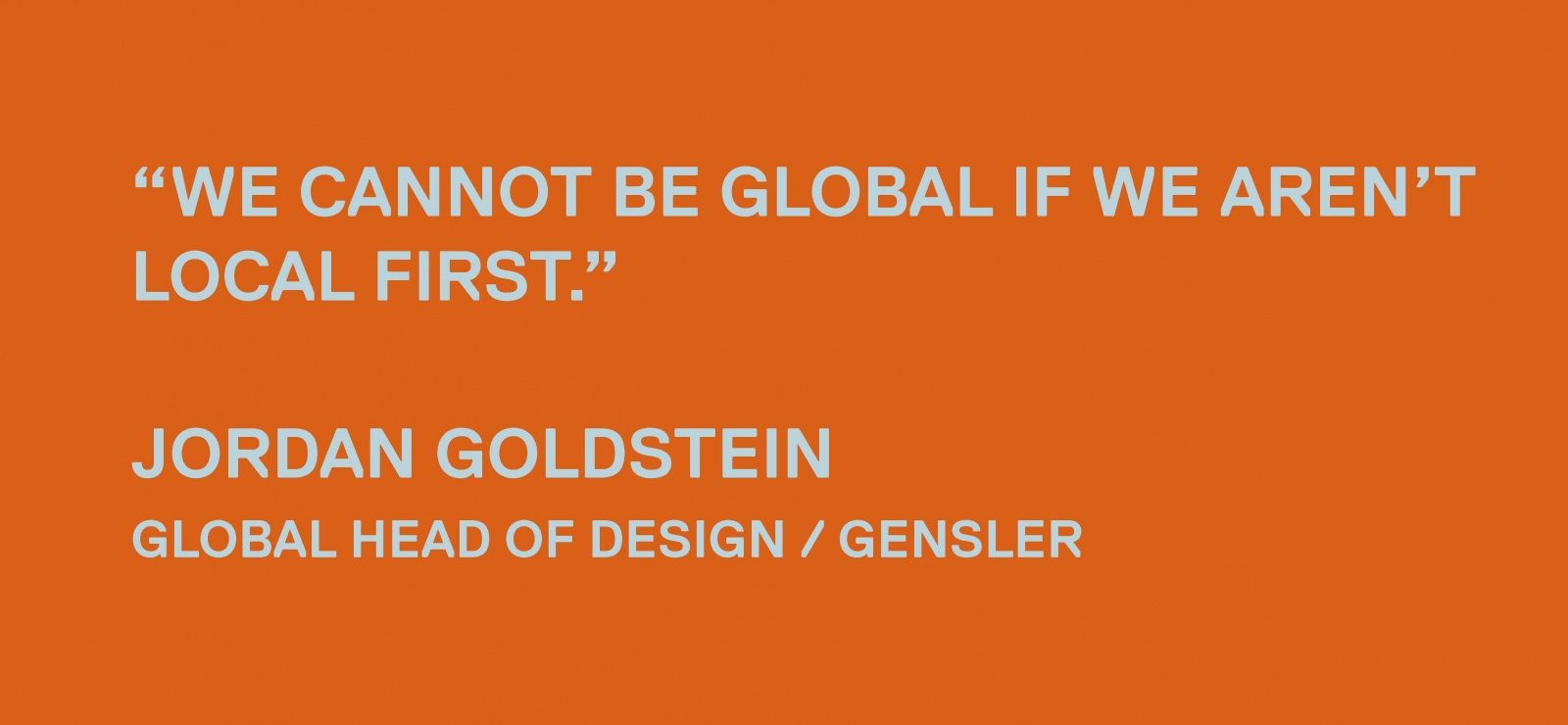
Partnerships on every level are integral to designing for the future. For example, on a local level, Gensler worked to revitalize an old waterfront that had been previously occupied by a dilapidated Navy yard. Being sensitive to the communities needs helped the designers to create spaces that would actually be used – such as parks, open air work and leisure areas, etc. By inviting the local community in, this lead to more development opportunities that better served the community.
On a more global level, it is important to recognize what advances in remote technology have done to increase collaboration between different geographies and ways of life. We are able to work locally, while bringing in minds from all over the world to help solve problems and provide new perspectives.
4. SOCIAL INCLUSIVITY
Ed Quevedo, Founder of The Foresight Lab, provokes that “nature’s model is not a model, but rather, the model.” He believes that change comes from the bottom up. What matters most in our forward motion is the work done by the most marginalized people among us, and how in helping them, we help everyone. Rather than focusing purely on design for environments or design for sustainability, we need to look at through the lens of design for justice.

To do this, we must influence policy makers and those at the top so that legislation reflects the needs of everyone—especially those that are feeling the everyday pain of these top down decisions.
For a deeper dive into our discussion, watch the full roundtable video below.
Design for our Collective Well-Being
A Virtual Roundtable
